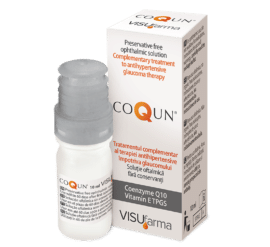Glaucoma
Glaucoma
Glaucoma affects millions of patients worldwide and can lead to blindness if not treated.
What is glaucoma?
Glaucoma is a group of ocular diseases in which the optic nerve is injured, leading to the loss of the peripheral visual field. Glaucoma can eventually lead to blindness if not treated. Glaucoma is frequently linked to abnormally high pressure in the eye (intraocular pressure, IOP), due to blockage or malfunction of the eye’s drainage system.
In 2010, Open Angle Glaucoma (the most common form of glaucoma) was estimated to affect 8.25 million individuals in the 7 worldwide major markets (US, Japan, UK, France, Germany, Italy, Spain).1
Glaucoma symptoms and causes
Abnormally high IOP does not cause any symptoms itself, however it can lead to optic nerve damage and vision loss if left untreated.
In the healthy eye, a small amount of aqueous humor (the liquid present inside the eye ball) is continually produced, circulates and flows out of the eye to maintain a constant eye pressure. In glaucoma, the aqueous humor does not flow out of the eye properly, leading to a fluid pressure build up in the eye that will, over time, cause damage to the optic nerve fibers. The main risk factors for developing eye glaucoma are age, race and family history of glaucoma.
Glaucoma treatment options
Current medications are targeted at reducing high IOP to slow the progression of the disease. Numerous eye drops are available to either decrease the amount of fluid in the eye or improve its flow out of the eye. Unfortunately, many patients with glaucoma do not adhere to medication due to the lack of symptoms.2,3
Several large trials have demonstrated that reducing IOP can prevent the progression of glaucoma in both early and late stages of the disease. A significant proportion of patients with elevated IOP require more than one medication to maintain their IOP within target levels, highlighting the need for more effective treatments.4,5
References
- The Ophthalmic Pharmaceutical Market Outlook to 2016 – Business insight, Sept 2011, BI00042-019
- Newman-Casey PA, Weizer JS, Heisler M, Lee PP, and Stein JD. Systematic review of educational interventions to improve glaucoma medication adherence. Semin Ophthalmol. 2013 May;28(3):191-201.
- Waterman H, Evans JR, Gray TA, Henson D, and Harper R. Interventions for improving adherence to ocular hypotensive therapy. Cochrane Database Syst Rev. 2013 Apr 30;4:CD006132.
- Sambhara D and Aref AA. Glaucoma management: relative value and place in therapy of available drug treatments. Ther Adv Chronic Dis. 2014 Jan;5(1):30-43.
- Bettin P and Di Matteo F. Glaucoma: present challenges and future trends. Ophthalmic Res. 2013;50(4):197-208.








